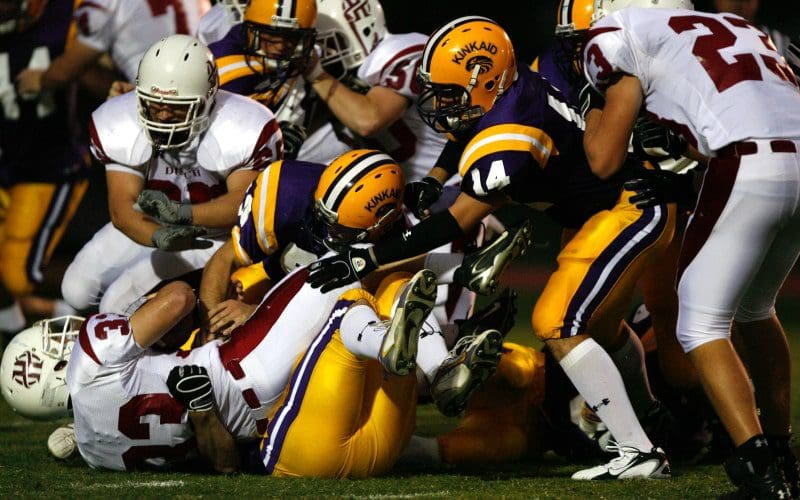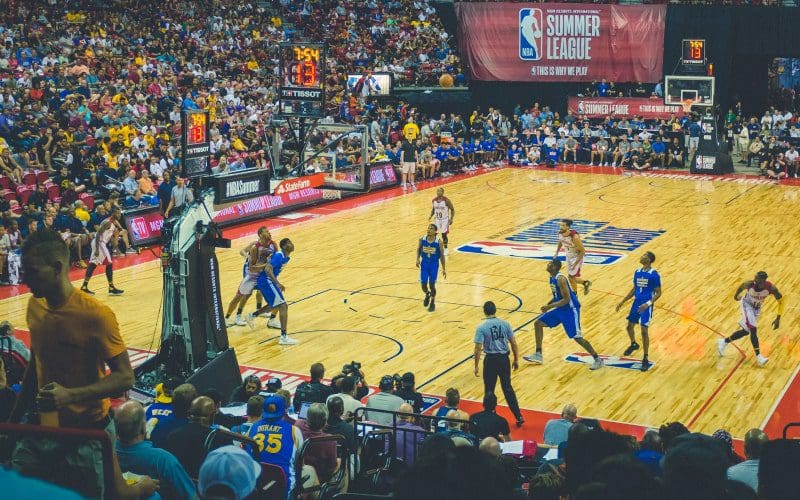AI-Generated Sports Highlights: Different Approaches
Competition for viewers’ attention is not over after the players leave the field. Now, anyone who can put up a highlight compilation or a game summarization first gets the edge. So, let’s talk about how media companies do just that — with the help of Artificial Intelligence.
Broadcasters and sports leagues are going out of their way to provide the viewers with the best sporting content they can produce. Given the sheer amount of people regularly tuning in to sporting events, be it on TV or on the field, video content producers take their best shots at making content that catches as many eyes as possible.
And the competition for viewers’ attention is not over after the players leave the field. Now, anyone who can put up a highlight compilation or a game summarization first gets the edge.
So, let’s talk about how media companies do just that — with the help of Artificial Intelligence.
How Sports Highlights Are Made
When it comes to generating sports video highlights, it’s a manual process for the most part. Sports broadcasters have large teams of editors who produce sports-related content for said broadcasters.
Usually, the process goes like this: the editor gets the footage of the whole game along with the data feed pointing to the memorable events. Then they go on to look through it and cut the clips containing all of the goals, pitches and dunks any sports fan would love along with some drama.
Then the editor compiles the clips into a single sequence, adds graphics, music, and transitions. That can be then posted on social media or broadcasted on TV to draw in more viewers.
That approach poses a serious problem with production efficiency.
The Problem With Manual Highlights Generation
Given the length of sporting events, it takes editors hours to make a single highlight compilation video. Add in the fact that the sports seasons can be tightly packed with events happening back to back — and you have a ton of work on your plate.
On top of that, compilation videos can serve different purposes for the broadcaster, from recapping the best moments on the air or on the internet for those who missed the game to putting them on social media or advertisements for promotional reasons.
So, sometimes there’s a need for several sports video highlights from a single game, which means even more time in front of the screen for editors.
The thing is that the editors don’t really have a lot of time to work with: with media, the first one to put out the content usually gets the attention. The quality of said clips, though very important, is rendered non-relevant if the clips are late.

The race against the clock has only gotten rougher over the years: now, any fan can pull out their smartphone and record the back and forth between the player and a referee, then post it immediately, and go viral in minutes.
So, we have to work as quickly as we can. And that is where Artificial intelligence steps in.
Automatic Sports Highlights Generation
To speed up the process of sports content generation, media providers are looking into ways to have AI analyze the game footage and pick out the highlight-worthy moments automatically.
Responding to the emerging demand, tech companies are adopting AI and ML algorithms to pinpoint the best moments of sports.
Now, the competition is on for the best approach to video content analysis. Let’s see what those approaches are.
Audio analysis
That approach is not all about identifying whatever is happening on the field, but how the audience reacts to it. That approach is utilized by WSC Sports.
By analyzing the sound, the algorithm picks up on anything out of the ordinary, like an audience cheering, or a referee arguing with a player — and chooses the respective clips to be included in the compilation.
But that approach may not be ideal for sports with less vocal audiences — for example, there are no cheering crowds during a golf game.
Speaking about the crowds — sometimes there are none even when they are supposed to be. During the COVID-related lockdowns, the sports events were held with now spectators.
And even when there are crowds, some of the subtle moments like the coach talking to the team or mascots doing their mascot things may not get included in the AI highlight.
Point selection
Another approach to finding the best moments of the sporting event is to have visual recognition APIs to detect the features common for memorable moments: fist-bumps, high-fives, raised hands, or fans standing up.
Such APIs are openly available and provided by Amazon and IBM. There are also proprietary solutions built on object recognition from companies such as AnyClip.
Backed by data analytics, the algorithm determines the required length of the clips to cut, edits out the unnecessary parts, and puts the video together.
picture sports highlights 6
Keeping in mind the abundance or compilations types a media company might need, that approach leaves a lot of the content out.
If a broadcaster wants to create a game summarization video — they would have to train the AI from scratch. A mascot dance compilation? You better have time to let the algorithm learn what it is.
Scene-level video analysis
Knowing the flaws of mentioned approaches, let’s look into the solution that could pinpoint highlight-worthy moments in video content just as quickly and accurately, but also could do so without preliminary training and additional data feeds.
CognitiveMill’s approach is all about relying on cognitive computing technology to achieve the human-like perception of video content. This way, the algorithm can analyze each scene of the video and extract all of the information required for creating highlights.
Let’s talk about why cognitive computing is a great fit for a task. It takes the concept of machine intelligence and runs with it: while AI allows for machines to learn and perform certain tasks, cognitive computing uses a bundle of tech to imitate the ways the human brain works. Thus, it can navigate much more complex situations.
When it comes to video analytics, cognitive computing relies on sophisticated Computer Vision technology based on:
- Deep Learning;
- Cognitive science;
- Machine perception;
- Human perception;
- Math modeling;
- Probabilistic AI;
- Digital image processing.
These technologies ensure that the solution is able to precisely identify the most important parts of the footage.
The solution is implemented as libraries, modules, containers, and pipelines which can be reused.
This approach needs no external data feeds or audio analysis. A system powered by cognitive computing can decompose the video and analyze the game dynamics, excitement levels, and the context of the event, imitating the human brain’s perception.

Different combinations of modules can be used to create any type of cognitive automation with the reconstruction of a simplified model of human cognition. It requires no extensive training to analyze the footage for different types of compilation videos, such as:
- Highlight videos for any type of sport;
- Trailers for tournaments;
- Game summarization clips.
Bottom Line
Everyone working in the media industry knows the rules: the early bird gets the worm.
That applies not only to covering news stories, but to the content strategy for broadcasting companies, sports leagues, and TV channels. Delivering high-quality content as quickly as possible to the viewers is a top priority here.
Keeping that in mind, media companies are turning to technology to find a way to speed up the process while retaining the accuracy of a human brain when it comes to creating sports highlights.
Among many approaches to the problem, the one which requires less preparation proves to be the most effective. Because it does not matter if the AI trims down the editing time but spends it training for the next set of clips.
In that regard, cognitive computing might be the way to go, since it can work with any content with no preparation while keeping the same accuracy at detecting highlight-worthy moments.
Pavel Saskovec is a Technical Writer at AIHunters. Pavel has extensive experience covering tech-related topics, the majority of which center around technology helping optimize the workflow of the media industry.
